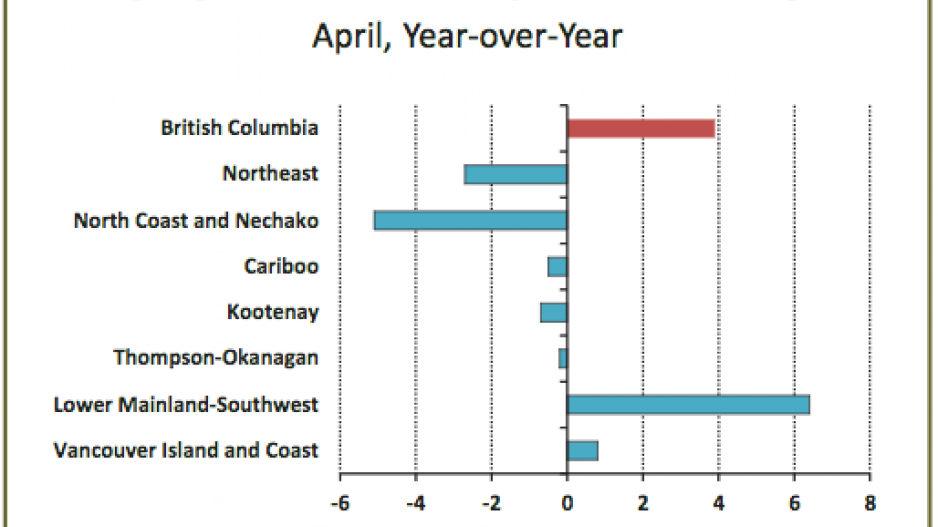In April British Columbia's unemployment rate dropped to a stunningly low 5.8% — the first time the province’s unemployment rate has been the lowest in the country since Statistics Canada began collecting comparable data in 1976.
Where did the 13,000 new jobs B.C. added in April come from? A closer look at the data reveals a sharp divide between industries and regions.

In April, British Columbia had the highest employment growth and lowest unemployment rate in the country. Chart: Central 1 Credit Union
The highest job growth by far was in construction, at 6.2%, reversing a 0.4% drop in March. B.C. also added jobs in accommodation and food service jobs (up 2.9%). Utilities, educational services and retail and wholesale trade were other categories that saw job growth.
Metro Vancouver real estate and construction activity has been extremely heated. In April, Metro Vancouver’s housing starts were the highest they’ve been since 1972, according to Canada Mortgage and Housing Corporation. After seeing 20% gains in 2015, home prices continued to accelerate in the first few months of 2016: in April 2016, the average Greater Vancouver single family home was up 30% compared to April 2015.
An increase in accommodation and restaurant jobs lines up with growth in the tourism industry, which has benefited from the low Canadian dollar and is anticipating another busy summer season.

B.C. job growth by sector, April 2016. Data: BC Stats, Statistics Canada
Mining and oil and gas have both been buffeted by a lengthy period of low commodity prices. B.C.’s northeastern Peace region is the heart of the province’s oil and gas production; in April the unemployment rate for the Peace was 9.4%. That was down slightly from 9.7% in March, but still the highest unemployment rate in B.C.
Job growth was negative for mining, oil and gas (the category also includes forestry and fishing), agriculture, transport and warehousing, finance, health care and scientific and technical services.
Regionally, B.C.’s urban South Coast and Vancouver Island were the winners in employment growth. Every other region in the province saw negative employment growth.

Chart created by Central 1 Credit Union
@jenstden




